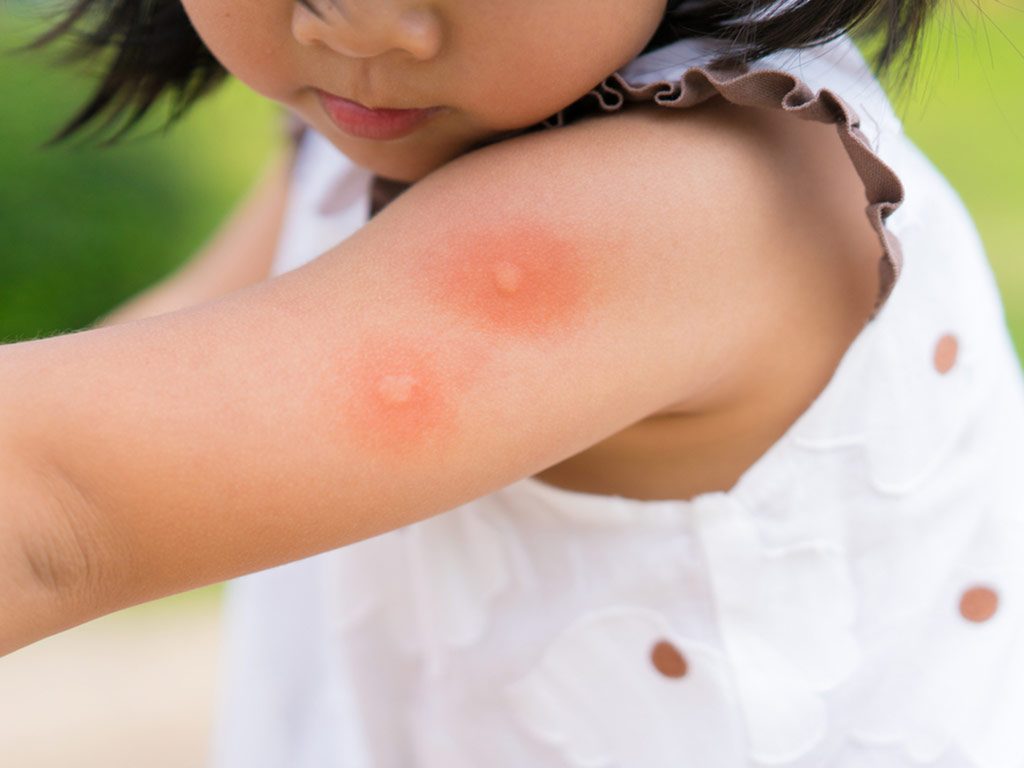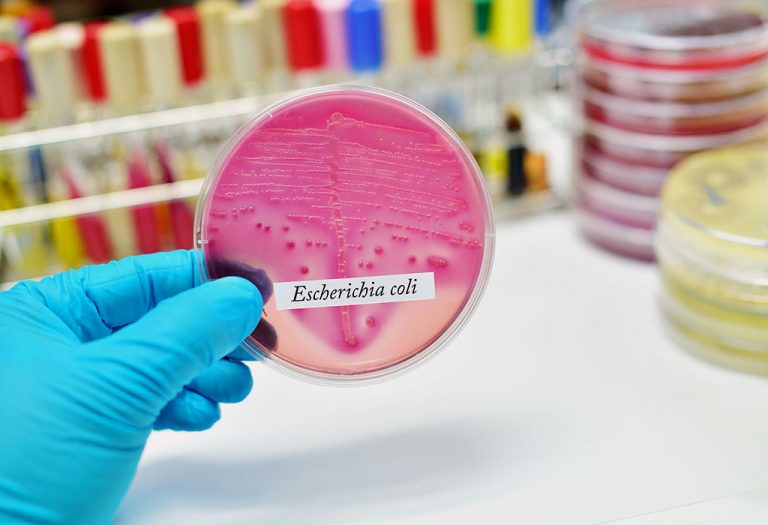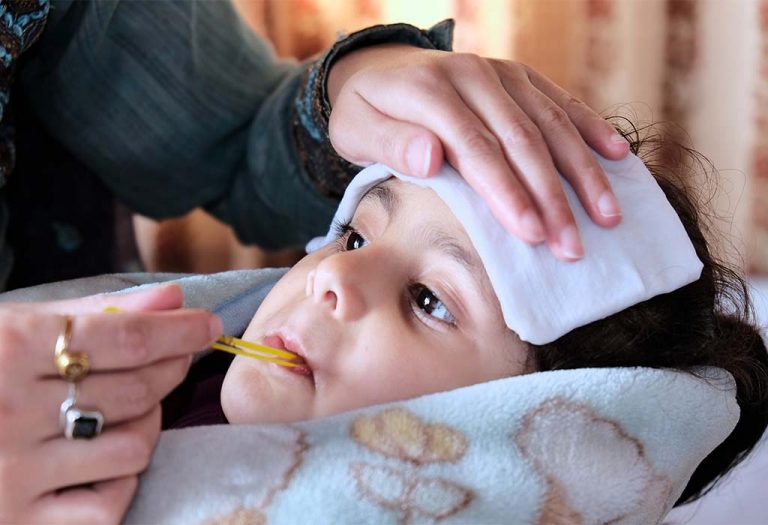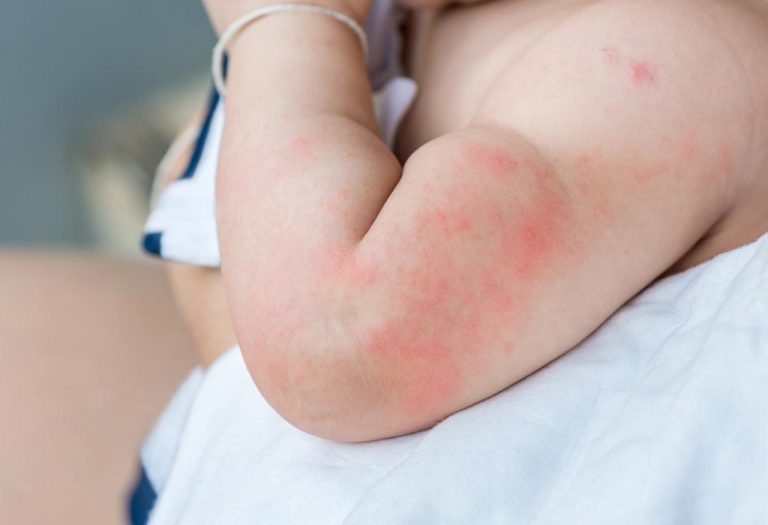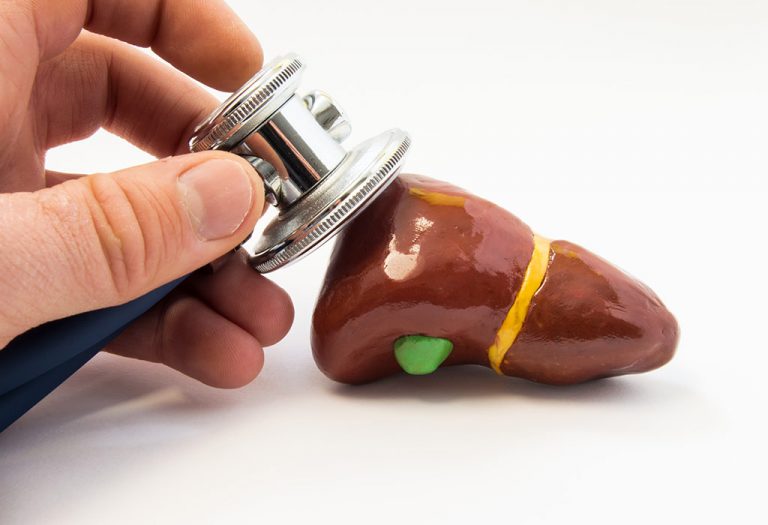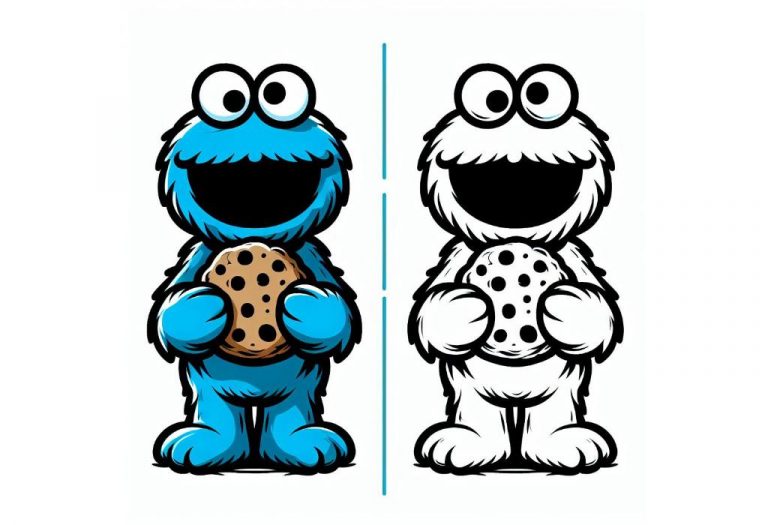Dengue in Children – Signs, Diagnosis & Treatment
- Video : How to Prevent Dengue Fever in Children?
- Video: Dengue in Children – Signs, Diagnosis and Treatment
- What Is Dengue and How Does It Spread?
- Signs and Symptoms of Dengue in Children
- Things to Do If Your Child Shows Symptoms of Dengue
- Diagnosis of Dengue in Children
- Treatment of Dengue Fever in Children
- Complications Due to Dengue Hemorrhagic Fever
- Ways to Prevent Dengue Fever
More than 500 million people are affected by mosquito-borne diseases that result in about 2.7 million deaths each year. The most dangerous ones are malaria, zika virus, chikungunya, yellow fever, and dengue fever. Dengue is especially common in India, with epidemics constantly emerging around the country. Luckily, this disease is treatable and has a rather low mortality rate. This article will help you understand dengue fever, its symptoms, treatment, and prevention methods.
Video : How to Prevent Dengue Fever in Children?
Video: Dengue in Children – Signs, Diagnosis and Treatment
What Is Dengue and How Does It Spread?
Dengue fever is carried by the female Aedes mosquito. This mosquito species can be identified by a striking striped pattern on its abdomen, giving them the name tiger mosquitoes. Usually found in warm, tropical and humid climates, these mosquitoes thrive in the presence of stagnant water. This makes dengue far more prevalent at the peak of the monsoons. Interestingly, the Aedes mosquito attacks during the day, which is unlike other disease-carrying mosquitoes. These mosquitoes usually bite in the early morning and the evening right before sunset.
It is important to note that the mosquito is simply a carrier, known as the disease vector. The cause of dengue in children as well as adults is not the mosquito itself, but rather a viral pathogen known as the dengue virus. There are five strains of dengue viruses, any of which can cause the disease. However, dengue caused by one of the strains will grant total immunity to the disease caused by that particular strain, but only partial resistance to the other viruses.
The prevalence of dengue is tricky to calculate, as most cases of the disease are unreported. According to WHO, around three million dengue people are infected with dengue every year, but the actual number might be more than 400 million. The disease spreads when the mosquito bites an individual, transferring the dengue virus into the bloodstream. The virus then attaches itself to the white blood cells, slowly penetrating them as they are carried throughout the body. After replicating inside the white blood cells, they emerge and infect other organs such as the liver, bone marrow, skin, and so on. The disease usually passes in two to ten days as the body sets off an immune response that kills all the viruses. However, in around five per cent of all cases, a more dangerous version of dengue fever can arise, known as Dengue Haemorrhagic Fever. This case has far more complications and requires immediate treatment.
While dengue is not usual in newborns, mothers with the disease are liable to pass the infection during labour. The virus can also be transmitted through blood transfusion and organ transplants. Luckily, in most cases, dengue cannot spread from one person to another.
Signs and Symptoms of Dengue in Children
Dengue fever is usually asymptomatic in nearly eighty per cent of all cases, even babies and small children. However, the younger the child, the more severe the symptoms, which usually materialise around four days after the infection. Here is a list of dengue symptoms in babies you should keep an eye out for.

- Flu-Like Illness
In most cases, dengue fever in infants begins with the symptoms associated with viral influenzas, such as high-temperature fever, runny nose, cough, and fatigue.
- Change in Behaviour
Your child might exhibit more agitation and irritability than usual, even without an apparent reason. He is also likely to cry often and throw tantrums. His appetite will drop, and the sleeping pattern will change drastically. This is because of fever and flu-like symptoms that your child is experiencing.
- Physical Discomfort
Affected children might experience muscle and joint aches, dull throbbing pain behind their eyes, back pain, splitting headaches, and so on. The pain feels like the bones are being broken. Dengue, therefore, is also known as “Breakbone Fever”.
- Gastrointestinal Problems
Your child might complain of shooting pains in the abdomen along with nausea, vomiting, and diarrhoea, which can be mistaken for symptoms of gastroenteritis. Vomiting is an early sign that the child may develop complications; hence he needs to be closely monitored.
- Skin Problems
A common symptom of dengue is an itchy skin rash that appears in patches. It has been described as a measles-like rash that resembles white islands in the sea of crimson. Another symptom to look out for is a constant itch that appears on the soles of the feet. However, the rash is transient and may disappear even before you see it.
- Bleeding
Children experience bleeding from their gums or nose due to a drop in the platelet count. The virus slows down the clotting rate of blood, resulting in bleeding. At times, bleeding can also occur in the gastrointestinal tract. However, this happens in complicated cases only and is not experienced by everyone suffering from dengue.
As mentioned above, in rare cases, dengue can turn into far more dangerous conditions such as the Dengue Haemorrhagic Fever and the Dengue Shock Syndrome. The symptoms associated with these diseases are listed below.
- Abrupt and excess blood loss due to tear in the blood vessels.
- A rapid shock that occurs due to the bleeding.
- A drastic fall in blood pressure.
- Possible organ failure leading to coma.
If you have observed your child showing some or all of these symptoms, you must take him to a medical practitioner immediately. However, if you can’t consult a doctor, the next sub-head should help you out.
Things to Do If Your Child Shows Symptoms of Dengue
There are several things to keep in mind if you observe any of the symptoms given below. Here’s what you must do.
- Put your child to bed, so that he doesn’t get exhausted, and gets the rest that he needs. He might need to be on bed rest for a certain period of time, depending on the severity of their symptoms.
- Give him whatever he likes to eat. Give more liquids than usual and check his urine. Urine should be light and clear.

- If your child is still being breastfed, make sure you do not skip his feeds. Breast milk is nutritious and provides enough fluids to the baby. For older kids, you’ll need to ensure they drink enough water. Oral Rehydration Therapy (ORT) is also recommended to help balance the electrolytes. If you aren’t sure about feeding your little one ORT, you may check with a paediatrician. Oral rehydration salts, which are available at most pharmacies, can be mixed in filtered/boiled water to make the solution. You may feed it to your child all through the day to hydrate him. Other natural ways to rehydrate include tender coconut water and citrus fruit juices. All liquids help in improving the condition.
- In case the baby has a high fever, in addition to paracetamol, soak a cloth in cold water and place it on his head. This will help reduce his body temperature.
- Avoid medicating your child with over-the-counter painkillers like ibuprofen or similar drugs that work to reduce swelling. This is because these medications can lower the platelet count further, and can potentially lead to more blood loss.
When you do consult a medical practitioner, your baby will be checked thoroughly for signs to confirm dengue. Here’s how the diagnosis will be made.
Diagnosis of Dengue in Children
As mentioned earlier, if you think your child is exhibiting any of the signs or symptoms as described above, consult a paediatrician as soon as possible. This is especially important if your child shows signs of fatigue, fever, joint pain, and rash. The doctor will conduct a physical examination to identify the symptoms. He/she might ask for your child’s medical history and details about his vaccinations. Further, the paediatrician will ask about the places you have visited with your child. This is because several regions in the country and the world are known to be hotbeds for dengue. If your child has travelled in these regions, the paediatrician will be able to evaluate the situation better. Post this, your baby’s blood sample will be sent to a diagnostic lab to test for the presence of the dengue virus
If dengue is confirmed, the doctor will be able to begin a treatment protocol, which we shall talk about in the next section.
Treatment of Dengue Fever in Children
Currently, there is no cure for dengue fever; however, dengue has a very low mortality rate and tends to resolve in a few days to a month. Only in complicated cases, the mortality rate is high. However, there are ways you can reduce the discomfort caused by dengue and speed up your baby’s recovery from the illness.

- Make sure your child drinks enough water and fluids along with healthy meals. He must sleep well, too, as it is important for his recovery. So, try to keep him on a sleep schedule, and ensure he doesn’t get worn out. A healthy diet and rest will help strengthen his immune system and destroy the virus.
- If the muscle and joint aches get unbearable, they can cause unnecessary distress to your child. Ask the paediatrician to prescribe analgesic medications like acetaminophen, which, unlike ibuprofen, do not bring about a drop in the blood platelet count.
- If your child’s symptoms do not improve even after getting enough rest, the paediatrician needs to be notified. There is a chance that it could be Dengue Haemorrhagic Fever. In that case, your child might have to be admitted to a hospital for intravenous (IV) therapy to provide fluids and salts lost due to vomiting and diarrhoea.
- The paediatrician may prescribe oxygen therapy too and continue monitoring your baby’s blood pressure frequently.
- If the symptoms of dengue do not resolve even after hospital treatment, the paediatrician might recommend a series of blood transfusions which will compensate for the blood lost during the disease.
While most children recover when they are diagnosed with dengue, there are some cases wherein the child may suffer from complications, mainly due to dengue hemorrhagic fever.
Complications Due to Dengue Hemorrhagic Fever
Dengue, if not managed well in time could lead to a severe condition called Dengue Hemorrhagic Fever, which further, could lead to health complications such as:
- Blood Clots
- Seizures
- Damage to the heart, liver, lungs and brain
- Shock due to excess blood loss
- Death
Clearly, dengue can create quite a havoc, especially when it affects a baby. But, there are ways you could prevent your little one from contracting the disease. Read on to know more.
Ways to Prevent Dengue Fever
Prevention is better than cure in the case of dengue fever. There are several ways you can avoid getting your baby bitten by mosquitoes that could carry the dengue virus. Here are a few ways to protect both yourself and your family from this illness:
- Mosquitoes prefer stagnant water so get rid of any still water lying around your house or locality. Join forces with your neighbours if necessary as this is a public hygiene matter. This will help avoid other mosquito-borne illnesses as well.
- Remove any objects like mugs, buckets, basins, pots, etc. that could hold water. This includes draining sinks and bathtubs too. Ensure you remove all the water and wipe them dry.
- For standing water that cannot be removed, such as drains, fountains and ponds, you can add small amounts of kerosene to the water to prevent mosquitoes from laying eggs in it. Kerosene is toxic for mosquitoes. It floats over water and prevents oxygen from entering the water, thus killing hatched larvae, if any, in the water.
- You could have your house and neighbourhood fumigated by pest control professionals. Take care that you and your family are not around when this is being done as the fumes could be harmful. For a natural alternative, burning coconut husks and shells or neem leaves have been known to drive mosquitoes away.
- For personal safety, have your child wear clothing that covers his body entirely. This includes long-sleeved shirts, pants, socks and even gloves if the weather permits.
- Ensure your family performs basic hygiene practices such as showering, as body odour is believed to attract mosquitoes.
- Use mosquito nets while sleeping, even during the day. They are a safe alternative to mosquito sprays and vaporisers, which may affect your child’s breathing and even cause problems with the functioning of his nervous system.
- Mosquito repellent creams are a good choice if protective clothing and nets are unavailable. Ensure they are safe for children before applying them on exposed skin.
- You can also install screen meshes on your window and door frames to keep the mosquitoes out. Buy good quality ones that are less likely to rip as mosquitoes can enter through the smallest openings. Remember to fix any tears in the mesh as soon as possible.
- Reduce his outdoor time during the rainy season; instead introduce him to fun indoor activities like board games, video games and so on. If he does go out to play, teach him to avoid areas with bushy foliage and stagnant water.
Dengue is common in tropical zones where the climate allows mosquitoes to thrive. The epidemic is also more likely to spread in third-world countries where public sanitation is given little or no importance. Therefore, it is imperative that you take the required precautions to prevent your child from contracting the disease, especially due to the lack of a cure. Interestingly, there is a vaccine available for dengue fever in some Southeast Asian and Latin American countries, but it remains only partially effective. Research to develop a vaccine for all five types of dengue viruses is still ongoing.
Resources and References:
Also Read:
Dengue in Babies and Toddlers
Home Remedies of Dengue for Kids
Malaria in Children – Causes, Symptoms & Treatment


